ORANGE HEXAGENIA PATOGONICA
In Patagonia Argentina, where I fish, there's a big nice mayfly, a Hexagenia genus, which produces hatches during Spring and Summer. (September to March)
They live mostly in big glacial euthropic lakes like the Nahuel Huapi, Traful, etc. Without a doubt it is a relative to the Hexagenia Limbata, which is very well known in US.
I saw it many times hatching during calm sunny mornings while I was fishing the lakes. It's a bug that can be imitated on regular dry fly hooks between #8-10. Its color is pale-orange or similar to a wheat seed.
It is a favorite meal for trout that feed along the endless coasts of those huge bodies of water. As those big lakes are home of really big trout that spawn in tributaries or big rivers that flow from them, I fish these rivers with my imitations of the big Hexagenia. The results are the best! Fish has instinct and memories.
In these cases I need a fly that imitates size, shape and color, but it must be also an excellent floater fly to challenge the strong currents. No other type of pattern has these characteristics than one base on the famous Lee Wullf series. So I designed my fly with deer hair and substituted poly yarn for the calf tail wings. This repels the water better and doesn't need floatant, and it also has a very attractive brightness.
For the hackle,I like to use just one long rooster feather; extra size more like on "Spider style", and not like on the standard dry fly size. I prefer a very long fiber hackle so I can trim it and form a flat base. This gives me a high profile floating bug imitation. I know that that this can be a mortal sin for classic fly tiers, so I am sorry, but I'm not religious about fly tying tradition.
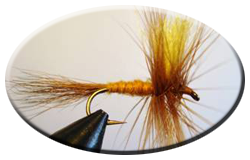
Materials:
- Hook: Standard dry fly #8-10
- Thread: Orange 6/0 pre-waxed
- Tail: Bucktail, clear brown
- Body: Antron dubbing, amber
- Rib: Cooper wire, extra fine
- Wing: Polypropylene floating yarn, orange gold or yellow
- Hackle: One long dry-fly rooster feather, clear brown
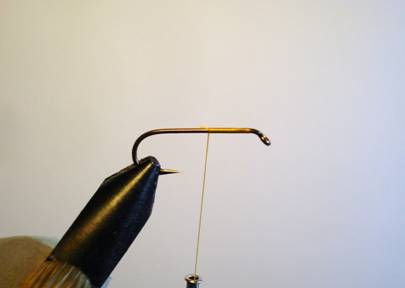
Attach tying thread to hook
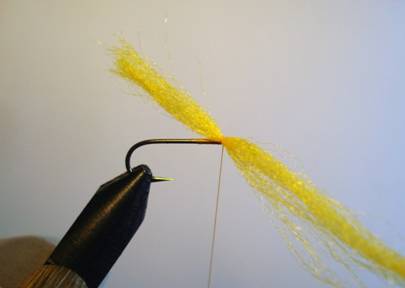
Attach poly wing material
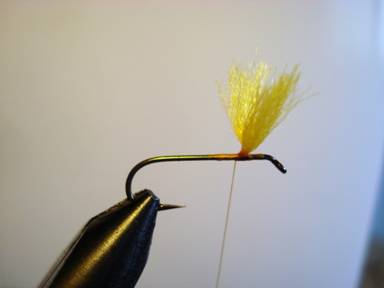
Finished wing
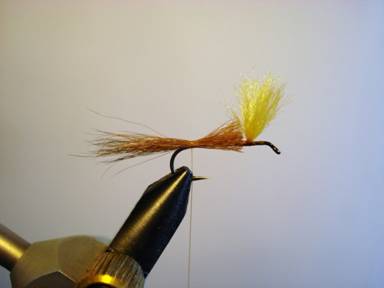
Tie in tail material
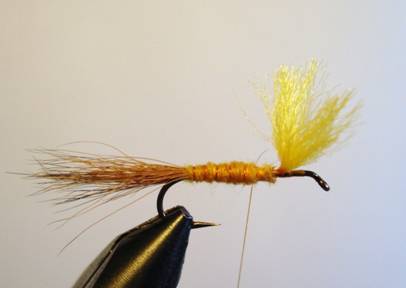
Dub body up to wing position
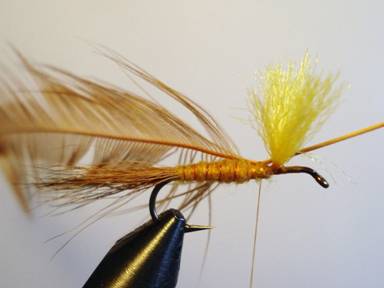
Attach hackle
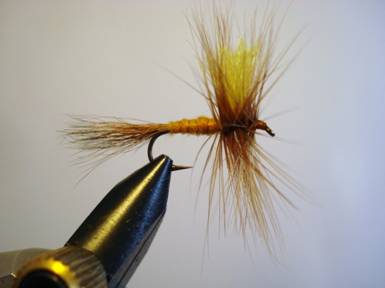
Finished fly before the hackle is trimmed
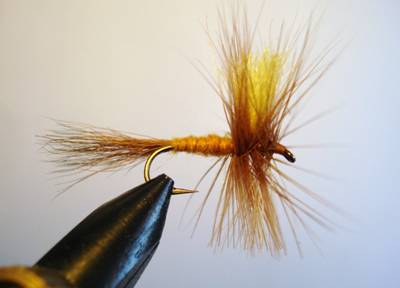
Finished fly with hackle trimmed on the bottom
For more great info, check out:
Beginning Fly Tying | Intermediate Fly Tying | Advanced Fly Tying.
